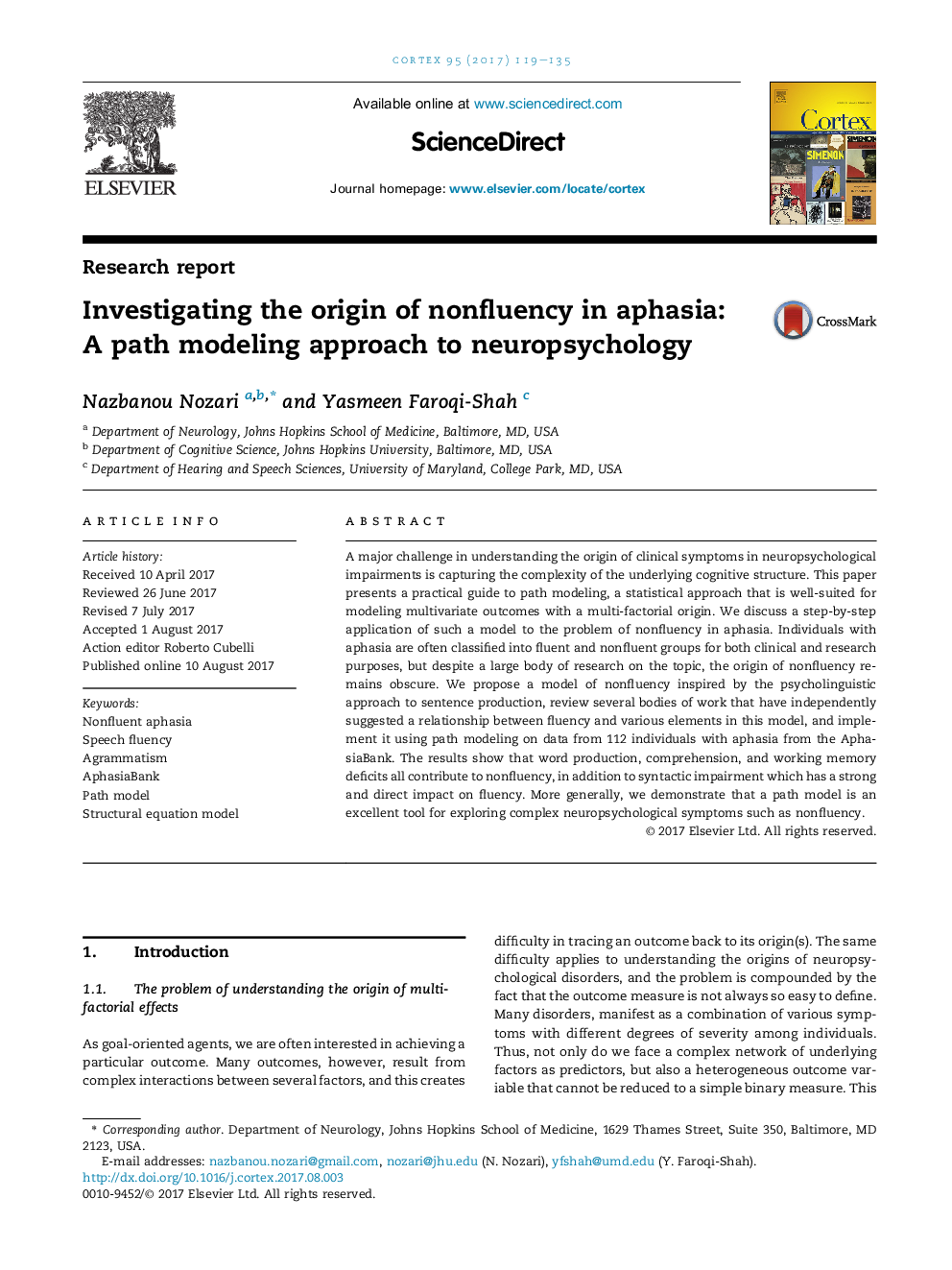| Article ID | Journal | Published Year | Pages | File Type |
|---|---|---|---|---|
| 5044525 | Cortex | 2017 | 17 Pages |
A major challenge in understanding the origin of clinical symptoms in neuropsychological impairments is capturing the complexity of the underlying cognitive structure. This paper presents a practical guide to path modeling, a statistical approach that is well-suited for modeling multivariate outcomes with a multi-factorial origin. We discuss a step-by-step application of such a model to the problem of nonfluency in aphasia. Individuals with aphasia are often classified into fluent and nonfluent groups for both clinical and research purposes, but despite a large body of research on the topic, the origin of nonfluency remains obscure. We propose a model of nonfluency inspired by the psycholinguistic approach to sentence production, review several bodies of work that have independently suggested a relationship between fluency and various elements in this model, and implement it using path modeling on data from 112 individuals with aphasia from the AphasiaBank. The results show that word production, comprehension, and working memory deficits all contribute to nonfluency, in addition to syntactic impairment which has a strong and direct impact on fluency. More generally, we demonstrate that a path model is an excellent tool for exploring complex neuropsychological symptoms such as nonfluency.
